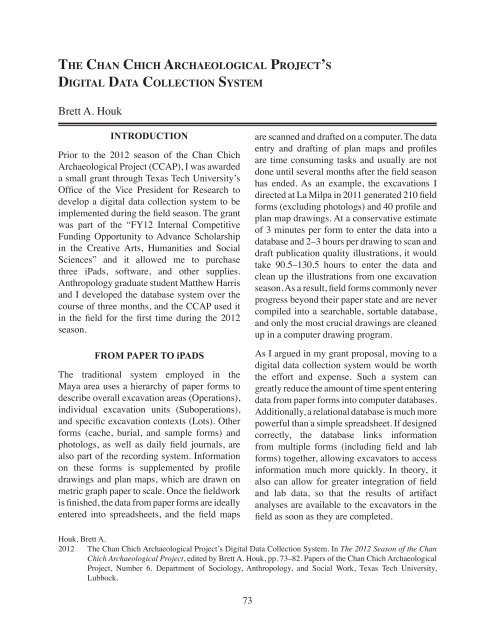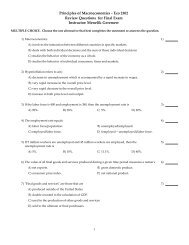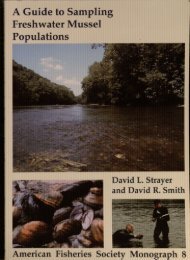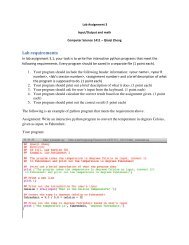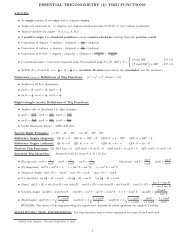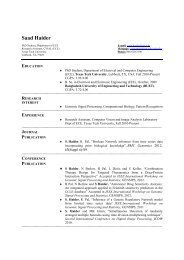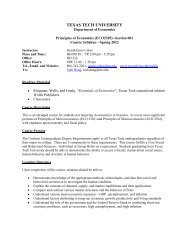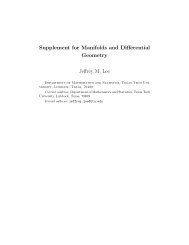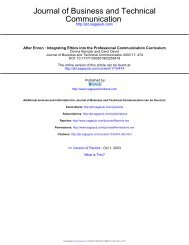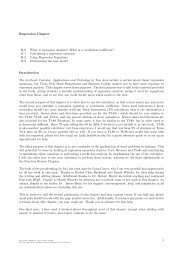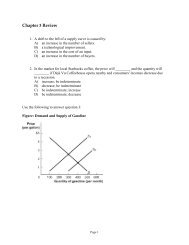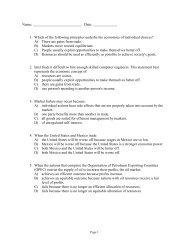Download - MyWeb - Texas Tech University
Download - MyWeb - Texas Tech University
Download - MyWeb - Texas Tech University
You also want an ePaper? Increase the reach of your titles
YUMPU automatically turns print PDFs into web optimized ePapers that Google loves.
The Chan Chich Archaeological Project’s<br />
Digital Data Collection System<br />
Brett A. Houk<br />
Introduction<br />
Prior to the 2012 season of the Chan Chich<br />
Archaeological Project (CCAP), I was awarded<br />
a small grant through <strong>Texas</strong> <strong>Tech</strong> <strong>University</strong>’s<br />
Office of the Vice President for Research to<br />
develop a digital data collection system to be<br />
implemented during the field season. The grant<br />
was part of the “FY12 Internal Competitive<br />
Funding Opportunity to Advance Scholarship<br />
in the Creative Arts, Humanities and Social<br />
Sciences” and it allowed me to purchase<br />
three iPads, software, and other supplies.<br />
Anthropology graduate student Matthew Harris<br />
and I developed the database system over the<br />
course of three months, and the CCAP used it<br />
in the field for the first time during the 2012<br />
season.<br />
From Paper to iPads<br />
The traditional system employed in the<br />
Maya area uses a hierarchy of paper forms to<br />
describe overall excavation areas (Operations),<br />
individual excavation units (Suboperations),<br />
and specific excavation contexts (Lots). Other<br />
forms (cache, burial, and sample forms) and<br />
photologs, as well as daily field journals, are<br />
also part of the recording system. Information<br />
on these forms is supplemented by profile<br />
drawings and plan maps, which are drawn on<br />
metric graph paper to scale. Once the fieldwork<br />
is finished, the data from paper forms are ideally<br />
entered into spreadsheets, and the field maps<br />
are scanned and drafted on a computer. The data<br />
entry and drafting of plan maps and profiles<br />
are time consuming tasks and usually are not<br />
done until several months after the field season<br />
has ended. As an example, the excavations I<br />
directed at La Milpa in 2011 generated 210 field<br />
forms (excluding photologs) and 40 profile and<br />
plan map drawings. At a conservative estimate<br />
of 3 minutes per form to enter the data into a<br />
database and 2–3 hours per drawing to scan and<br />
draft publication quality illustrations, it would<br />
take 90.5–130.5 hours to enter the data and<br />
clean up the illustrations from one excavation<br />
season. As a result, field forms commonly never<br />
progress beyond their paper state and are never<br />
compiled into a searchable, sortable database,<br />
and only the most crucial drawings are cleaned<br />
up in a computer drawing program.<br />
As I argued in my grant proposal, moving to a<br />
digital data collection system would be worth<br />
the effort and expense. Such a system can<br />
greatly reduce the amount of time spent entering<br />
data from paper forms into computer databases.<br />
Additionally, a relational database is much more<br />
powerful than a simple spreadsheet. If designed<br />
correctly, the database links information<br />
from multiple forms (including field and lab<br />
forms) together, allowing excavators to access<br />
information much more quickly. In theory, it<br />
also can allow for greater integration of field<br />
and lab data, so that the results of artifact<br />
analyses are available to the excavators in the<br />
field as soon as they are completed.<br />
Houk, Brett A.<br />
2012 The Chan Chich Archaeological Project’s Digital Data Collection System. In The 2012 Season of the Chan<br />
Chich Archaeological Project, edited by Brett A. Houk, pp. 73–82. Papers of the Chan Chich Archaeological<br />
Project, Number 6. Department of Sociology, Anthropology, and Social Work, <strong>Texas</strong> <strong>Tech</strong> <strong>University</strong>,<br />
Lubbock.<br />
73


